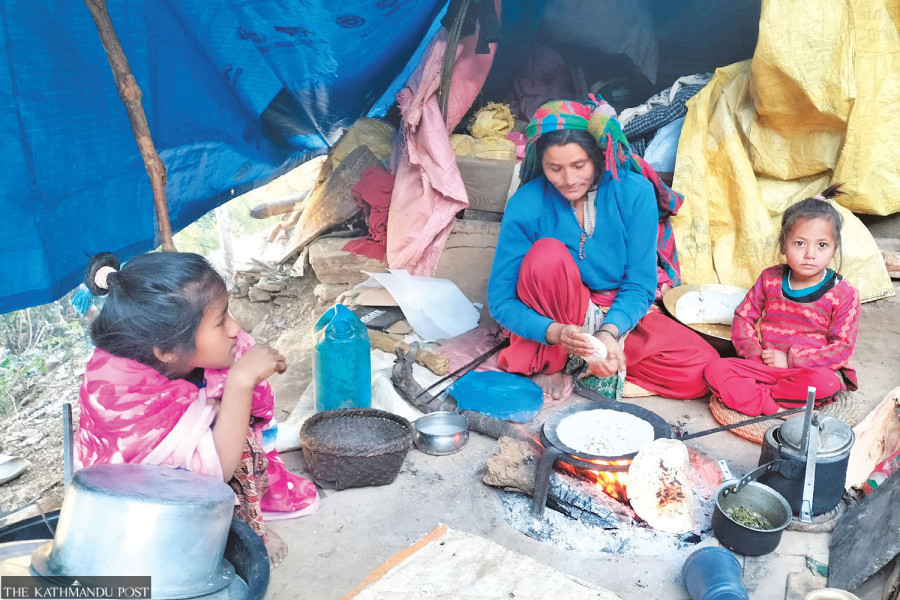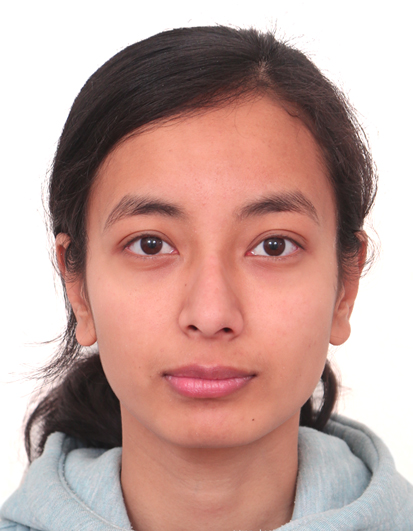Columns
Women are unequally vulnerable to disaster risk
Gender issues are just an afterthought in contemporary DRR policies and practices.
Priya Karmacharya
Disaster risk refers to exposure to hazards and vulnerability to exposed elements. The same event can impact people differently due to their pre-existing conditions, including economic status, occupation, literacy, ethnicity, caste, age, disability, and gender. Marginalised and minority groups are generally more vulnerable and are disproportionately affected by disasters.
A 2007 study, “The Gendered Nature of Natural Disasters: The Impact of Catastrophic Events on the Gender Gap in Life Expectancy, 1981–2002”, shows that the mortality rates of women during a disaster are several times higher than that of men. Moreover, even though the life expectancy of women is higher than that of men, natural disasters lower the life expectancy of women. This suggests that women are more vulnerable than men. Such vulnerability is not based on biological or physiological differences but rather due to the socially constructed unequal gender norms that govern what roles women and men should play and how they should behave.
More often than not, women are caregivers of the household. They are responsible for domestic tasks, child-bearing/rearing and caring for the elderly, sick or dependent family members. In addition, they may also be balancing work and community management roles. These roles receive little value as they do not generate income and leave women little time for income-generating activities. Consequently, women may have limited access and control over resources, undermining their decision-making power.
Furthermore, social roles dictate social behaviour, such as not being able to leave home without the permission of a male family member and failing to learn or perform so-called masculine skills such as swimming or climbing trees. Due to these socially constructed constraints, women are inept and less willing to save themselves.
Nepal's disaster risk reduction (DRR) and management systems have come a long way from the early reactive response-centric approaches to the current proactive approach, emphasising prevention and preparedness and increasing attention to gender-specific needs in the disaster context. Yet, they fall short of addressing vulnerabilities arising from pre-existing gendered social structures and unequal power relations, which affect people’s ability to respond to disaster and their lives in post-disaster contexts.
Post-disaster, most of the relief and assistance provided to women is concerned with addressing the needs of pregnant and lactating women, distributing menstruation hygiene kits and establishing safe spaces. While these forms of relief are necessary and even life-saving, they reduce the needs of women to simply the needs associated with their reproductive and caregiving role and do not address the needs of women who do not fall under the category of being either pregnant, lactating, or menstruating.
A study analysing the gendered impact of the 2015 Gorkha earthquake found that many women could not access relief or reconstruction aid because they were unable to provide the documentation (proof of citizenship, title to house/land). Similarly, many women, having been displaced by the earthquake and without any support to re-establish their livelihood, entered the entertainment sector, resorting to work in cabin restaurants and dance bars where they may be subject to sexual abuse. This notable rise in women seeking work in this sector results from conditions after the earthquake, but planners and policymakers do not generally consider it. As most support provided post-disaster is response-oriented and relief-focused and envisioned to achieve only short-term goals, this leaves out many other issues, such as access to general health care, food, shelter, livelihood opportunities and citizenships.
Gender issues are considered an afterthought to the current DRR policies and practices. These policies add to the prevailing unequal institutional structure and do not challenge unequal gender relations and power structures, which is the root cause of the issue. Furthermore, DRR policies and practices are still imagined within traditionally defined gender roles, which promote and reinforce gender stereotypes.
DRR policies and frameworks primarily view women as a monolithic identity, and the intersectionality within gendered experiences is largely ignored. Vulnerability is affected by many other factors, such as economic status, occupation, literacy, ethnicity, caste, age and disability. Analysing vulnerability by considering these multiple factors and how they inter-relate reveals that not all women are equally vulnerable and that some are multiple burdened.
Furthermore, DRR strategies proposed to reduce disaster risk may serve to subject women and girls to increased hardships, harassment and exploitation. A study on the impact of Covid-19 on Nepali Women reports that due to women’s role as caregivers and their overrepresentation in service and care-oriented fields, they were more vulnerable to infection. Women were also at higher risk of falling into extreme poverty during the pandemic as they were more likely than men to be working informally.
Furthermore, the lockdowns added extra childcare and domestic workload, which women mostly took up. This forced women to either quit their jobs or permanently drop out of the labour force, and it most likely decreased the participation of girls in online classes and increased the rate at which girls drop out in rural areas. The lockdowns also brought about a surge in gender-based violence cases. However, due to increased attention to the pandemic, many who sought to report incidents of abuse or seek support could not access those services promptly.
Similarly, a survey by WOREC found that during the pandemic, returning migrant workers were seen as transmitters of disease and faced exclusion. Moreover, women migrant workers were negatively portrayed in social media and online news portals as promiscuous, due to which they were subject to further psychological and physical harassment from their families. Even within detention centres where returning migrants were to quarantine, women were not safe from sexual assault.
Even when DRR programmes in good faith recognise women’s potential to respond to disasters, this adds more responsibility to women who now, in addition to fulfilling their caregiver, reproductive and productive roles, must also act as responders to disasters or as participants in processes of reconstruction, spending time rebuilding homes, livelihoods, and communities. This additional responsibility can negatively impact their health and well-being and create a knock-on effect on their daughters’ well-being if they have to step in to help their mothers.




 7.12°C Kathmandu
7.12°C Kathmandu













%20(1).jpg&w=300&height=200)

